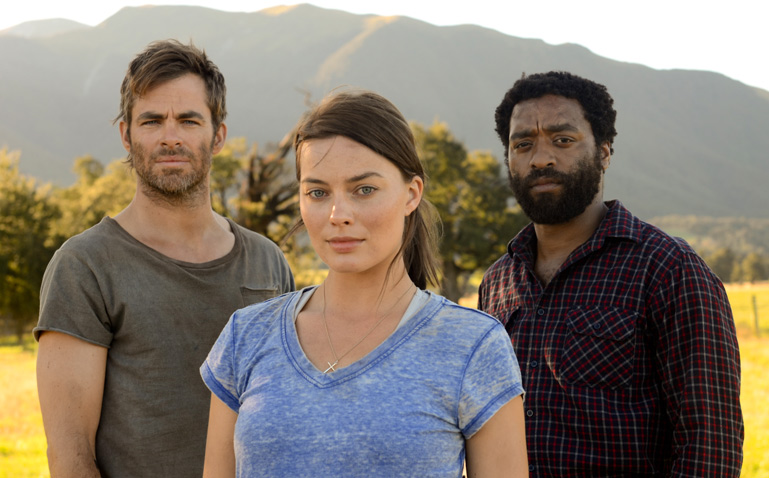By providing your information, you agree to our Terms of Use and our Privacy Policy. We use vendors that may also process your information to help provide our services. This site is protected by reCAPTCHA Enterprise and the Google Privacy Policy and Terms of Service apply.
How I Shot That: DP Tim Orr on Shooting Post-Apocalyptic ‘Z for Zachariah’

Paula Bernstein

 As part of our “How I Shot That” series, Indiewire asked cinematographer Tim Orr about shooting Craig Zobel’s “Z for Zachariah,” the post-apocalyptic drama starring Chiwetel Ejiofor, Margot Robbie and Chris Pine which premiered at Sundance 2015 and was released on August 21.
As part of our “How I Shot That” series, Indiewire asked cinematographer Tim Orr about shooting Craig Zobel’s “Z for Zachariah,” the post-apocalyptic drama starring Chiwetel Ejiofor, Margot Robbie and Chris Pine which premiered at Sundance 2015 and was released on August 21.
READ MORE: Margot Robbie is Caught in an Apocalyptic Love Triangle in ‘Z for Zachariah’
Based on the novel by Robert C. O’Brien and written by Pall Grimson and Nissar Modi, “Z for Zachariah” focuses on a young woman (Margot Robbie) who survives a nuclear war and believes she is the last human on Earth — until she meets a dying scientist searching for survivors. After they locate another survivor, a love triangle develops.
What camera and lens did you use? Arri Alexa 4:3 with Panavision E Series Anamorphic Lenses
This was the most difficult shot on my movie — and this is how I pulled it off: “Z for Zachariah” takes place after an apocalyptic event. There is no electricity. Night light is either candles, lanterns or ambient moonlight. Creating realistic ambient “no light – light” is a challenge. In this movie it became even more of a challenge because all of the night interiors had to be shot “Day for Night” due to the production schedule.
In one instance, Ann (Margot Robbie) walks down the hallway to find Loomis (Chiwetel Ejiofor) crumpled at the bottom of the stairs, having fallen after trying to leave the house. The challenge was to keep the scene dark and realistic, but still see detail. The walls of the hallway were also white, which made it even more difficult. Ann was lit by a lite panel that the gaffer held while the camera tracked back with her. She then walks into her POV which then booms up to look over the stairs at Loomis below.
The shot began wide, so there was little to no room for lights. I put a dense black fabric over the panes of the window in the background to knock down the light, then did a “lean to” tent to allow some ambient daylight to touch the window to create a moonlight effect. A 4′ daylight kino flo with one bulb was hung above the window, out of frame, that was heavily diffused with ND 6 and 1/4 blue and 1/8 plus green. At the bottom of the stairs there was an M8 bounce diffused with muslin to provide fill light on Loomis. The lighting was sparse and simple, but very challenging to create the proper tone of darkness, which you could see through, but not get “muddy.” I exposed the scene very bright, so it would not get muddy and printed it down in the grade. In the DI (Digital Intermediate), we added some power windows to darken the walls further.
This is my favorite cinematographer, and why: Conrad Hall. He had the best eye in my opinion. Always interesting, he wasn’t afraid of taking risks or accepting the unexpected. There was a poetic presence in all of his work.
What’s the best film school for an aspiring cinematographer? Or is it necessary?) I’m not sure it’s necessary. It worked well for me. I went to North Carolina School of the Arts. For me, it was not about what I learned but who I met and continue to work with today. I think this business, like any other is about relationships and certain amount of luck. I think that you can find your way as a DP without attending a film school. If you find like-minded individuals who are passionate about film then it is about shooting as much as you can.
Do you think the shift from film to digital is good? bad? (or just is?) As much as I love film, and still prefer to shoot it, I think the move to digital is a good thing. It is another tool for the cinematographer. Film is not as much of an option as it used to be, but digital offers certain advantages over film that I embrace as a good thing, particularly low light performance. I can shoot in much lower light, which I prefer.
What advice do you have for cinematographers who want to get to Sundance? Shoot as much as you can and follow your instincts. The more you can be true to your own eye and create an individual style, the richer your work will be.
Editor’s Note: The “How I Shot That” series is part of the Indiewire and Canon U.S.A. partnership at the 2015 Sundance Film Festival in Park City, where we celebrate cinematography at Canon Creative Studio on Main Street. Read the entire series here. This story was originally published on January 26, 2015.
READ MORE: Sundance Review: Craig Zobel’s ‘Z for Zachariah’ is Not Your Typical Post-Apocalyptic Romance
By providing your information, you agree to our Terms of Use and our Privacy Policy. We use vendors that may also process your information to help provide our services. This site is protected by reCAPTCHA Enterprise and the Google Privacy Policy and Terms of Service apply.

















